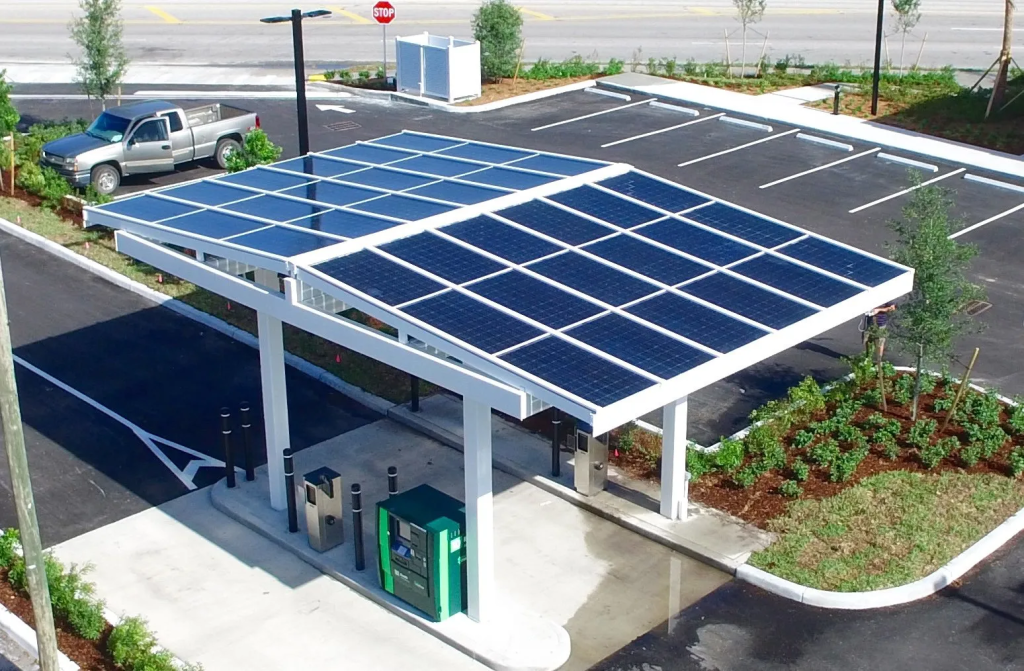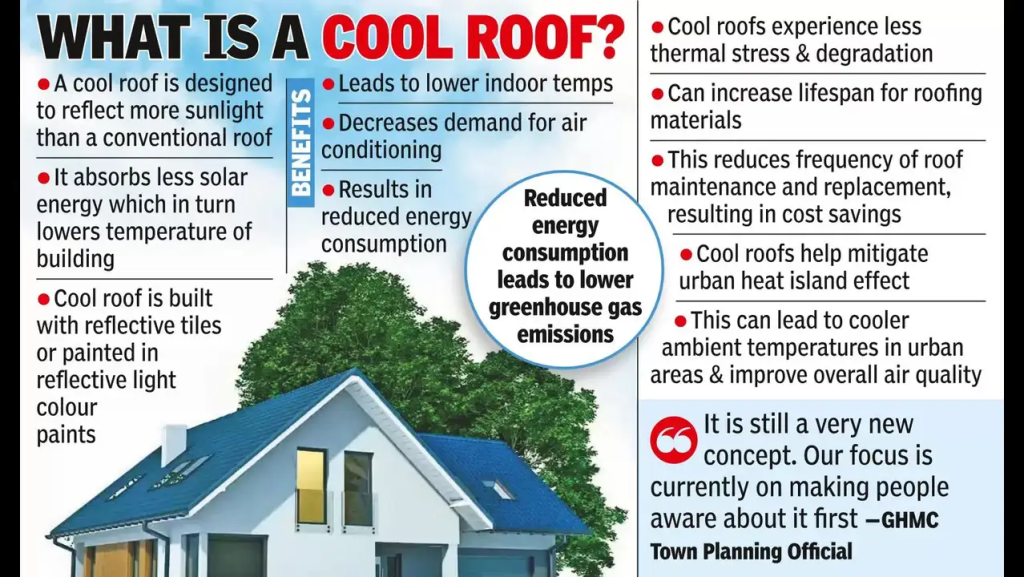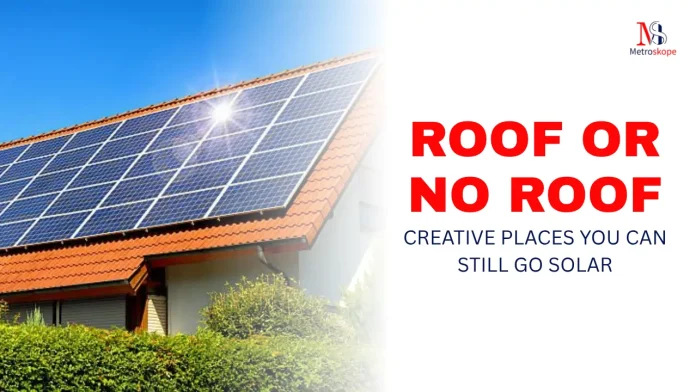So, you’ve caught the solar bug, but your roof has other plans. Maybe it’s older than your grandmother’s secret cookie recipe,
shadier than a used car salesman, or simply doesn’t exist because you live in an apartment that makes a shoebox look spacious.
Fear not, solar-curious friend! The sun doesn’t discriminate, and neither should your solar dreams.
Welcome to the wonderful world of creative solar installations, where thinking outside the (roof) box isn’t just encouraged—it’s essential.
From floating solar farms that make your pool look like a high-tech lagoon to solar trees that would make Mother Nature jealous, we’re about to explore 15 ingenious ways to harness the power of the sun without ever touching your roof.
Why Going Beyond the Roof Makes Sense
Before we dive into the creative alternatives, let’s address the elephant in the room:

why would anyone want to skip the roof? Well, buckle up for some reality checks that might sound familiar.
Common Roof Challenges
Structural Issues: Your roof might be holding up about as well as a house of cards in a hurricane.
Not all roofs can handle the additional weight of solar panels, and retrofitting can cost more than your firstborn’s college education.
Shading Problems: If your roof gets less sun than a vampire’s bedroom, solar panels won’t perform optimally.
Trees, buildings, and other structures can turn your solar investment into an expensive decoration.
Roof Condition: If your roof needs replacement in the next 10 years, installing solar panels now is like putting a tuxedo on a pig—it might look fancy, but it’s not practical.
Rental Properties: Renters often can’t make permanent modifications to their homes, leaving them feeling left out of the solar revolution.
Aesthetic Concerns: Some homeowners think rooftop solar panels are about as attractive as a mullet at a wedding.
Alternative installations can maintain curb appeal while still generating clean energy.
Benefits of Alternative Solar Installations
| Benefit | Description |
|---|---|
| Flexibility | Can be designed to fit any space or aesthetic preference |
| Optimal Positioning | Panels can be positioned for maximum sun exposure |
| Easy Maintenance | Ground-level access makes cleaning and repairs simpler |
| Scalability | Easier to expand systems as energy needs grow |
| Dual Purpose | Many alternatives serve multiple functions beyond energy generation |
Ground-Mounted Solar: The Classic Alternative
Ground-mounted solar systems are like the reliable friend who’s always there when you need them.
They’re not the flashiest option, but they get the job done with minimal fuss.
How Ground-Mounted Solar Works
Ground-mounted systems use either fixed-tilt or tracking mounts to position panels at the optimal angle for sun exposure. Think of them as solar panels that decided to take a vacation from the roof and set up camp in your backyard.
Fixed-Tilt Systems: These are the “set it and forget it” of solar installations. Panels are mounted at a fixed angle, typically between 30-45 degrees, depending on your latitude.
Tracking Systems: These systems follow the sun throughout the day like a sunflower with an engineering degree. They can increase energy production by 20-30% but come with higher costs and maintenance requirements.
Advantages of Ground-Mounted Solar
- Optimal Positioning: Panels can be angled perfectly for maximum sun exposure
- Easy Maintenance: No need to channel your inner mountain goat to clean panels
- Better Airflow: Ground-level installation provides better cooling, improving efficiency
- Expandable: Adding more panels is easier than expanding a rooftop system
- No Roof Damage Risk: Your roof stays intact and warranty-friendly
Disadvantages to Consider
- Land Requirements: You need adequate yard space (typically 100-200 sq ft per kW)
- Higher Installation Costs: Foundation work and trenching add to expenses
- Aesthetic Impact: Some find ground-mounted systems less visually appealing
- Potential Shading: Ground-level installations may face more shading issues
Cost Breakdown
| Component | Cost Range |
|---|---|
| Panels | $0.50-$0.80 per watt |
| Mounting Hardware | $0.25-$0.50 per watt |
| Installation Labor | $1.00-$2.00 per watt |
| Electrical Components | $0.25-$0.50 per watt |
| Total System Cost | $2.00-$3.80 per watt |
Floating Solar: Making Waves in Clean Energy
Floating solar, or “floatovoltaics” (yes, that’s a real word), is exactly what it sounds like—solar panels that float on water.
It’s like giving your pond or lake a high-tech makeover that would make even the most sophisticated koi fish jealous.
Where Floating Solar Works Best
Residential Applications:
- Large ponds or small lakes
- Swimming pools (with proper safety measures)
- Irrigation reservoirs
- Decorative water features
Commercial Applications:

- Retention ponds
- Wastewater treatment facilities
- Agricultural irrigation systems
- Industrial cooling ponds
Benefits of Floating Solar
Improved Efficiency: Water cooling keeps panels 10-15% more efficient than land-based installations. It’s like giving your solar panels a perpetual cool drink on a hot day.
Reduced Evaporation: Panels can reduce water evaporation by up to 70%, saving precious water resources. Your local drought-stricken community will thank you.
Algae Control: Reduced sunlight penetration helps control algae growth, keeping your water feature cleaner and healthier.
Land Conservation: Floating systems preserve valuable land for other uses while generating clean energy.
Installation Considerations
Water Depth: Minimum 3-4 feet deep to prevent panels from touching bottom during low water periods.
Anchoring Systems: Proper anchoring prevents your solar investment from floating away during storms (which would be both expensive and embarrassing).
Electrical Safety: Waterproof electrical connections and GFCI protection are non-negotiable.
Permits: Many jurisdictions require special permits for floating installations.
Cost Comparison
| System Type | Cost per Watt | Annual Maintenance |
|---|---|---|
| Floating Solar | $3.50-$5.00 | $0.015-$0.025 |
| Ground-Mounted | $2.50-$4.00 | $0.010-$0.020 |
| Rooftop | $2.00-$3.50 | $0.005-$0.015 |
Solar Canopies: Shade and Power Combined
Solar canopies are the multitaskers of the solar world. They provide shade, generate electricity, and look pretty doing it.
They’re like the Swiss Army knife of sustainable energy solutions.
Types of Solar Canopies
Parking Lot Canopies: Transform your parking area into a power-generating, car-protecting marvel. Your vehicles stay cool, and your electric bill stays low.
Patio Canopies: Extend your outdoor living space while generating clean energy. Perfect for those who want to sip their morning coffee under solar-powered shade.
Pool Canopies: Combine pool coverage with energy generation. Your pool stays cleaner, and your pool pump runs on solar power.
Walkway Canopies: Create covered pathways that generate electricity. It’s like having a solar-powered tunnel that makes walking more interesting.
Design Considerations
Structural Engineering: Canopies must support panel weight plus wind and snow loads. Nobody wants their solar canopy to become an expensive lawn ornament after the first storm.
Height Clearance: Minimum 8-10 feet clearance for vehicle access, 7-8 feet for pedestrian areas.
Drainage: Proper water runoff design prevents pooling and structural damage.
Aesthetics: Modern canopy designs can enhance rather than detract from property appearance.
Cost and Benefits Analysis
| Benefit | Value |
|---|---|
| Energy Generation | 1,000-1,500 kWh per kW annually |
| Shade Value | $500-$1,000 annual cooling savings |
| Vehicle Protection | Reduced paint fading and interior damage |
| Property Value | 3-5% increase in property value |
| Installation Cost | $4.00-$7.00 per watt |
Agrivoltaics: Farming with Solar Panels
Agrivoltaics, or agri-photovoltaics, combines agriculture with solar energy generation.

It’s like having your cake and eating it too, except the cake is vegetables and the eating is electricity generation.
How Agrivoltaics Works
Solar panels are mounted high enough to allow farming activities underneath. The panels provide partial shade, which can actually benefit certain crops by reducing heat stress and water evaporation.
Crop Benefits:
- Reduced water needs (up to 30% less irrigation)
- Protection from extreme weather
- Extended growing seasons
- Improved crop quality for shade-tolerant plants
Energy Benefits:
- Dual land use maximizes property productivity
- Cooler panel temperatures improve efficiency
- Reduced ground reflection reduces panel soiling
Suitable Crops for Agrivoltaics
| Crop Type | Shade Tolerance | Benefits |
|---|---|---|
| Leafy Greens | High | Reduced bolting, extended harvest |
| Berries | Moderate | Protection from birds and hail |
| Root Vegetables | Moderate | Consistent soil moisture |
| Herbs | High | Concentrated flavors, extended season |
| Pasture Grass | Moderate | Livestock shade, improved grazing |
Installation Considerations
Panel Height: 8-12 feet minimum for equipment access
Spacing: 15-20 feet between panel rows for adequate sunlight
Tracking Systems: Single-axis trackers can optimize both energy and crop production
Electrical Safety: Proper grounding and protection for wet conditions
Solar Pergolas and Gazebos: Outdoor Living Gets Electric
Solar pergolas and gazebos turn your outdoor living space into an energy-generating oasis. They’re like regular pergolas, but with superpowers and a significantly smaller carbon footprint.
Design Options
Traditional Pergolas: Classic design with solar panels integrated into the roof structure. Perfect for those who want to maintain traditional aesthetics while embracing modern technology.
Modern Gazebos: Sleek, contemporary designs that make a statement about your commitment to sustainability and style.
Hybrid Structures: Combine solid roofing with solar panels, providing both complete coverage and energy generation.
Functionality Benefits
Outdoor Entertainment: Create comfortable outdoor spaces for dining, entertaining, and relaxation.
Weather Protection: Provide shelter from rain, snow, and excessive sun exposure.
Lighting Integration: Built-in LED lighting powered by the integrated solar system.
Electrical Outlets: Convenient power sources for outdoor appliances and devices.
Cost and Sizing
| Structure Size | Solar Capacity | Cost Range |
|---|---|---|
| Small (10×10 ft) | 2-3 kW | $8,000-$12,000 |
| Medium (12×16 ft) | 4-5 kW | $12,000-$18,000 |
| Large (16×20 ft) | 6-8 kW | $18,000-$25,000 |
Vertical Solar Installations: Going Up Instead of Out
When horizontal space is limited, think vertical! Vertical solar installations are perfect for urban environments, small properties, or anyone who wants to make a bold architectural statement.
Vertical Installation Types
Wall-Mounted Systems: Panels mounted directly on building walls, particularly effective on south-facing walls with minimal shading.
Fence-Integrated Systems: Solar panels integrated into fence structures, providing privacy and power generation.
Vertical Tracking Systems: Panels that adjust angle throughout the day for optimal sun exposure.
Building-Integrated Photovoltaics (BIPV): Solar cells integrated into building materials like windows, facades, or cladding.
Efficiency Considerations
Vertical installations typically generate 60-80% of the energy produced by optimally-tilted rooftop systems. However, they offer unique advantages:
- Winter Performance: Better snow shedding and reduced shading from low sun angles
- Space Efficiency: Maximize energy generation in limited spaces
- Aesthetic Integration: Can enhance rather than detract from building design
- Dual Purpose: Provide privacy, wind protection, or architectural interest
Installation Challenges
Structural Support: Walls must be engineered to support additional weight and wind loads.
Electrical Routing: More complex wiring runs may increase installation costs.
Permits: Building departments may require additional engineering review.
Maintenance: Cleaning and maintenance may require specialized equipment.
Solar Fencing: Boundary Lines That Generate Power
Solar fencing combines property boundaries with energy generation. It’s like having a fence that pays for itself while keeping the neighbors’ dog out of your garden.
Types of Solar Fencing
Transparent Solar Fencing: Uses semi-transparent panels that provide partial privacy while generating electricity.
Solid Panel Fencing: Opaque panels that provide complete privacy and maximum energy generation.
Hybrid Systems: Combination of traditional fencing materials with integrated solar panels.
Applications
Residential Properties:
- Privacy fencing with energy generation
- Pool safety barriers with solar integration
- Garden boundaries that power irrigation systems
Commercial Properties:
- Perimeter security with power generation
- Sound barriers along highways
- Industrial facility boundaries
Benefits and Considerations
| Benefit | Consideration |
|---|---|
| Dual Purpose | Higher cost than traditional fencing |
| Space Efficiency | Potential shading from vegetation |
| Easy Expansion | Electrical connections between panels |
| Privacy | Permit requirements may vary |
Portable and Mobile Solar Solutions
For the nomadic solar enthusiast, portable and mobile solar solutions offer flexibility and freedom. Perfect for RVs, boats, camping, or anyone who wants to take their clean energy on the road.
Portable Solar Options
Folding Solar Panels: Compact, lightweight panels that unfold for use and store compactly when not needed.
Solar Suitcases: Hard-case portable systems with built-in charge controllers and batteries.
Flexible Solar Panels: Lightweight, bendable panels that can conform to curved surfaces.
Solar Backpacks: Integrated solar panels in backpacks for charging devices on the go.
Mobile Solar Applications
RV Solar Systems: Roof-mounted or portable systems for recreational vehicles.
Boat Solar: Marine-grade systems for sailboats and motor yachts.
Camping Solar: Portable power stations for off-grid adventures.
Emergency Preparedness: Backup power solutions for disaster preparedness.
System Sizing and Costs

| Application | Power Needs | System Size | Cost Range |
|---|---|---|---|
| Basic Camping | 100-300W | 1-3 panels | $200-$800 |
| RV Living | 400-1200W | 4-12 panels | $1,000-$4,000 |
| Marine Systems | 200-800W | 2-8 panels | $500-$2,500 |
| Emergency Backup | 1000-3000W | Power station | $800-$3,000 |
Community Solar Gardens: Sharing is Caring
Community solar gardens allow multiple participants to share the benefits of a single solar installation. It’s like a solar potluck where everyone brings something to the table and everyone gets to enjoy the benefits.
How Community Solar Works
Subscription Model: Participants subscribe to a portion of a larger solar installation and receive credits on their electric bills.
Ownership Model: Multiple parties own shares in a solar installation and receive direct benefits from their investment.
Cooperative Model: Community members form a cooperative to develop and own solar projects collectively.
Benefits of Community Solar

Access for All: Renters, apartment dwellers, and those with unsuitable roofs can access solar energy.
Economies of Scale: Larger installations often have lower per-watt costs.
Professional Management: Maintenance and management handled by experienced operators.
Flexibility: Participants can typically adjust their subscription as needs change.
Considerations and Challenges
Availability: Not all areas have community solar programs available.
Subscription Costs: May require upfront payments or long-term commitments.
Bill Credits: Savings depend on utility rate structures and program terms.
Waiting Lists: Popular programs may have waiting lists for participation.
Solar Art Installations: Beauty Meets Function
Solar art installations combine aesthetic appeal with energy generation. They’re perfect for those who want their renewable energy to make an artistic statement.
Types of Solar Art
Solar Trees: Artistic structures that mimic natural trees while generating electricity.
Sculptural Installations: Custom-designed solar sculptures that serve as both art and energy generation.
Solar Flowers: Panels that track the sun like sunflowers, creating dynamic visual displays.
Integrated Landscape Art: Solar panels incorporated into landscape design elements.
Design Considerations
Artistic Vision: Balance between aesthetic appeal and energy generation efficiency.
Structural Engineering: Ensure artistic installations can withstand weather conditions.
Electrical Integration: Seamlessly incorporate electrical components into artistic design.
Maintenance Access: Design for easy cleaning and maintenance without compromising aesthetics.
Example Projects and Costs
| Installation Type | Size | Cost Range | Energy Output |
|---|---|---|---|
| Solar Tree | 5-10 kW | $25,000-$50,000 | 6,000-12,000 kWh/year |
| Sculpture | 2-5 kW | $15,000-$30,000 | 2,500-6,000 kWh/year |
| Flower Tracker | 3-8 kW | $20,000-$40,000 | 4,000-10,000 kWh/year |
Vehicle-Integrated Solar: Power on the Move
Vehicle-integrated solar systems bring renewable energy to transportation. From electric vehicle charging to powering auxiliary systems, mobile solar is gaining traction.
Electric Vehicle Integration
EV Charging Stations: Solar-powered charging stations for electric vehicles.
Vehicle-to-Grid (V2G): Electric vehicles with solar panels can sell power back to the grid.
Integrated Solar Panels: Solar panels built into vehicle bodies for continuous charging.
Recreational Vehicle Solar
RV Roof Systems: Comprehensive solar installations for motorhomes and travel trailers.
Portable RV Solar: Deployable panels for temporary installations.
Boat Solar Systems: Marine-grade installations for sailing and motor yachts.
Benefits and Limitations
Benefits:
- Reduced fuel costs
- Extended range for electric vehicles
- Off-grid capabilities
- Reduced environmental impact
Limitations:
- Limited surface area for panels
- Weight and aerodynamic considerations
- Higher per-watt costs
- Variable sun exposure while moving
Solar Awnings and Shades: Functional Fashion
Solar awnings and shades provide the perfect combination of sun protection and energy generation. They’re like regular awnings, but with a PhD in renewable energy.
Types of Solar Awnings
Retractable Solar Awnings: Motorized awnings with integrated solar panels that can extend or retract as needed.
Fixed Solar Awnings: Permanent installations that provide constant shade and energy generation.
Window Solar Shades: Vertical installations that reduce glare while generating electricity.
Patio Solar Umbrellas: Large umbrellas with integrated solar panels for outdoor dining areas.
Design Features
Motorized Operation: Solar-powered motors for automatic operation based on sun and weather conditions.
Integrated Lighting: LED lighting systems powered by the integrated solar panels.
Weather Sensors: Automatic retraction during high winds or storms.
Battery Storage: Integrated battery systems for energy storage and nighttime use.
Installation and Costs
| Type | Size | Cost Range | Energy Output |
|---|---|---|---|
| Retractable Awning | 10×8 ft | $3,000-$6,000 | 1-2 kW |
| Fixed Awning | 12×10 ft | $2,500-$5,000 | 1.5-2.5 kW |
| Window Shades | 4×6 ft | $1,000-$2,000 | 0.3-0.6 kW |
| Patio Umbrella | 10 ft diameter | $1,500-$3,000 | 0.5-1 kW |
Innovative Urban Solar Solutions
Urban environments present unique challenges and opportunities for solar installations. Creative solutions are emerging to maximize renewable energy in dense city settings.
Urban Solar Opportunities
Balcony Solar: Compact systems designed for apartment balconies and terraces.
Window Solar: Transparent or semi-transparent panels that function as windows.
Facade Integration: Building-integrated photovoltaics incorporated into building exteriors.
Parking Meter Solar: Solar-powered parking meters and street furniture.
Micro-Solar Solutions
Plug-and-Play Systems: Small systems that connect directly to household outlets.
Guerrilla Solar: Temporary installations for renters and urban dwellers.
Solar Appliances: Individual appliances with integrated solar panels.
Challenges and Solutions
Space Constraints: Limited installation space requires creative approaches.
Shading Issues: Urban environments often have significant shading challenges.
Regulations: Building codes and HOA restrictions may limit options.
Aesthetics: Urban installations must balance function with visual appeal.
Cost Comparison and ROI Analysis

Understanding the financial aspects of alternative solar installations is crucial for making informed decisions. Let’s break down the costs and returns for different options.
Comprehensive Cost Comparison
| Installation Type | Cost per Watt | Total System Cost (5kW) | Annual Savings | Payback Period |
|---|---|---|---|---|
| Rooftop Solar | $2.50-$3.50 | $12,500-$17,500 | $1,000-$1,500 | 8-12 years |
| Ground-Mounted | $3.00-$4.00 | $15,000-$20,000 | $1,200-$1,800 | 9-13 years |
| Solar Canopy | $4.00-$6.00 | $20,000-$30,000 | $1,500-$2,200 | 10-15 years |
| Floating Solar | $3.50-$5.00 | $17,500-$25,000 | $1,300-$1,900 | 10-14 years |
| Agrivoltaics | $4.50-$6.50 | $22,500-$32,500 | $1,800-$2,500 | 10-16 years |
Factors Affecting ROI
Energy Production: Higher efficiency and optimal positioning improve returns.
Utility Rates: Higher electricity rates improve solar payback periods.
Incentives: Federal, state, and local incentives significantly impact ROI.
Maintenance Costs: Ground-level installations may have higher maintenance accessibility.
Dual Benefits: Installations that provide additional value (shade, aesthetics) improve overall ROI.
Financing Options
Cash Purchase: Highest long-term returns but requires upfront investment.
Solar Loans: Spread costs over time with various loan terms available.
Solar Leases: Lower upfront costs but reduced long-term savings.
Power Purchase Agreements (PPAs): Pay for power generated rather than system ownership.
Installation Tips and Considerations
Successfully implementing alternative solar installations requires careful planning and consideration of various factors.
Site Assessment
Sun Exposure: Evaluate potential locations for optimal sun exposure throughout the day and seasons.
Shading Analysis: Identify potential shading from trees, buildings, or other structures.
Soil Conditions: For ground-mounted systems, assess soil stability and drainage.
Electrical Access: Consider proximity to electrical panels and connection requirements.
Permitting and Regulations
Building Permits: Most installations require permits from local building departments.
Electrical Permits: Electrical work typically requires separate permits and inspections.
Utility Interconnection: Grid-tied systems require utility approval and interconnection agreements.
HOA Approval: Some installations may require homeowner association approval.
Professional vs. DIY Installation

Professional Installation Benefits:
- Expertise and experience
- Warranty coverage
- Permit handling
- Safety compliance
DIY Installation Considerations:
- Cost savings
- Personal satisfaction
- Learning experience
- Time investment
Maintenance and Monitoring
Regular Cleaning: Keep panels clean for optimal performance.
System Monitoring: Track energy production to identify potential issues.
Professional Inspections: Annual inspections ensure system safety and performance.
Vegetation Management: Trim vegetation to prevent shading and damage.
Future of Alternative Solar Installations
The solar industry continues to evolve with new technologies and installation methods emerging regularly.
Emerging Technologies
Perovskite Solar Cells: Next-generation solar technology with higher efficiency and lower costs.
Transparent Solar Panels: See-through panels that can be integrated into windows and facades.
Flexible Solar Films: Ultra-thin, flexible panels that can be applied to curved surfaces.
Solar Paint: Photovoltaic paint that can be applied to various surfaces.
Market Trends
Decreasing Costs: Continued cost reductions make alternative installations more affordable.
Increased Efficiency: Higher efficiency panels reduce space requirements.
Battery Integration: More systems include battery storage for energy independence.
Smart Integration: IoT and smart home integration for optimized performance.
Regulatory Developments
Net Metering: Evolving policies affect the economics of solar installations.
Building Codes: Updated codes increasingly favor solar-ready construction.
Incentive Programs: New incentives for innovative solar installations.
Utility Programs: More utilities offering community solar and alternative programs.
Your Solar Journey Starts Here
Whether you have a roof or not, the solar revolution has a place for you. From floating panels that turn your pond into a power plant to artistic installations that make your neighbors jealous, the options for creative solar installations are limited only by your imagination (and maybe your budget).

The key to successful alternative solar installation is matching the right solution to your specific situation. Consider your space, budget, aesthetic preferences, and energy needs when choosing from these creative options.
Remember, going solar isn’t just about reducing your electric bill—it’s about joining a movement toward sustainable energy independence. Whether you choose ground-mounted panels, floating solar, or a solar art installation, you’re making a statement about your commitment to a cleaner, more sustainable future.
The sun is shining, the technology is proven, and the options are endless. So stop making excuses about not having the perfect roof and start exploring the perfect solar solution for your unique situation. Your future self (and your electric bill) will thank you.
Start with a professional solar assessment to evaluate your options. Many installers offer free consultations and can help you identify the best alternative solar solution for your specific needs and budget.
The solar revolution is happening with or without your roof—make sure you’re part of it!

